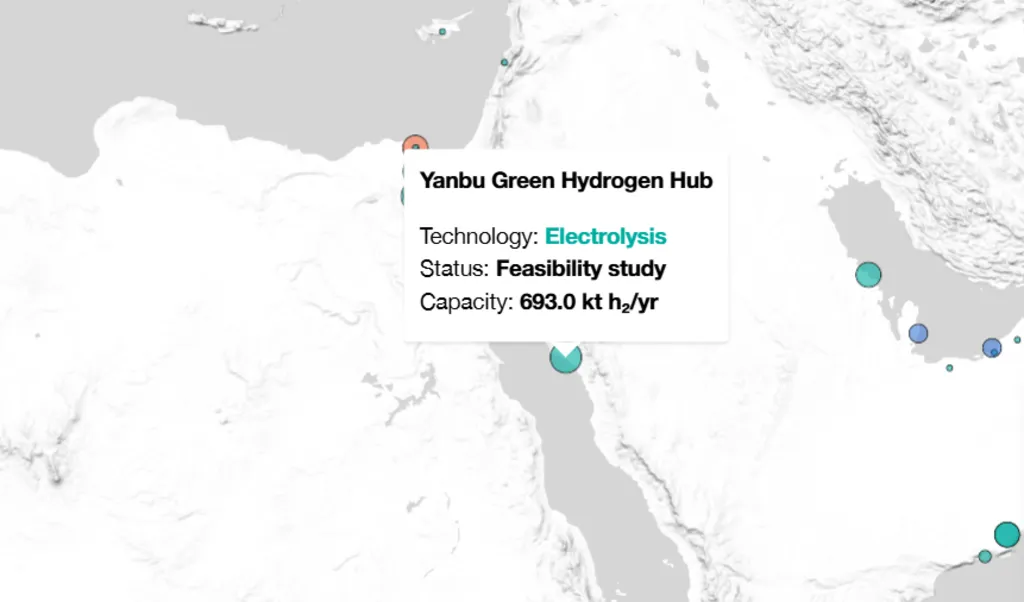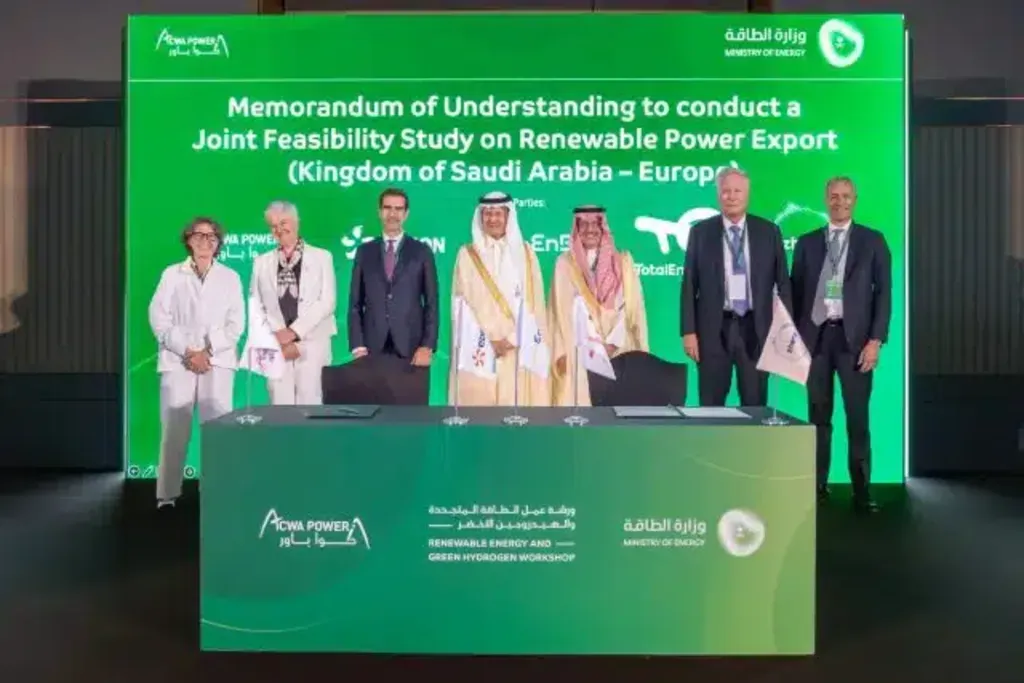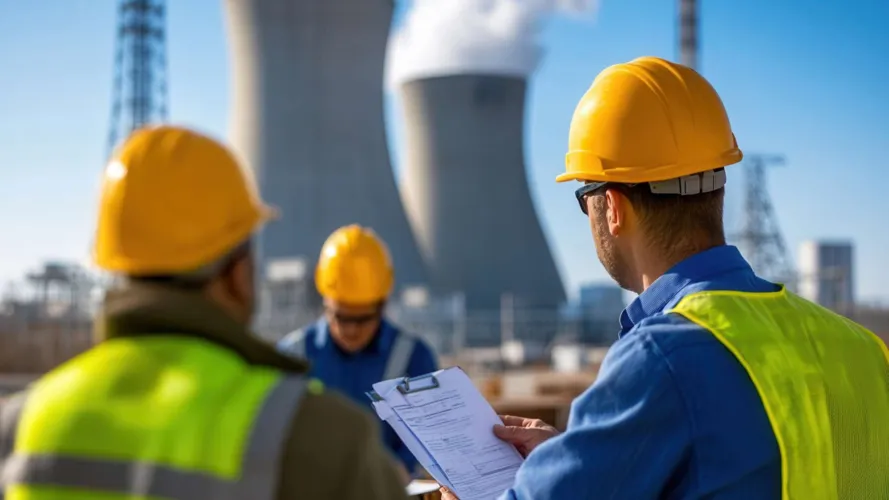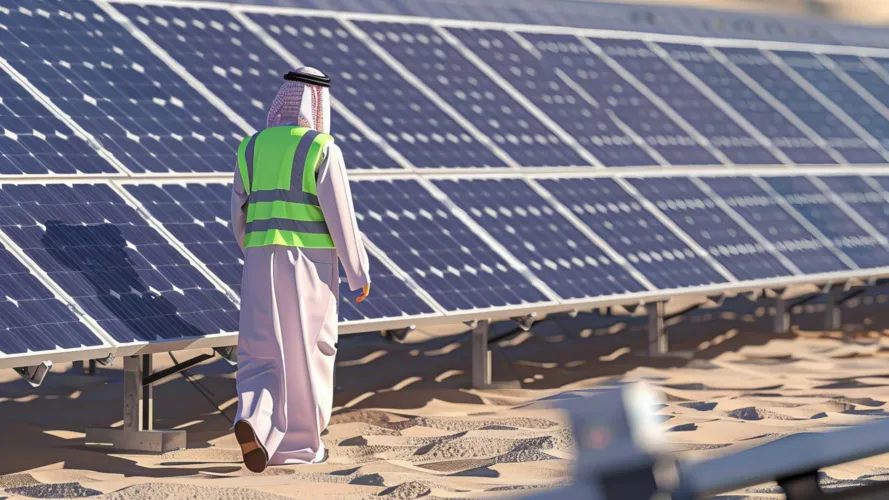48 GWh Battery Storage Powers 24/7 Saudi Renewable Hydrogen Output
Saudi Arabia is rapidly scaling its green hydrogen infrastructure, with 48 gigawatt-hours (GWh) of battery energy storage systems (BESS) planned by 2030. These systems will store solar energy harvested during the day and release it at night, enabling round-the-clock hydrogen production. This approach ensures that electrolyzers (devices that split water into hydrogen and oxygen) operate continuously, even in the absence of sunlight. The deployment of vanadium flow batteries, suited to desert climates, further strengthens the reliability of Saudi renewable hydrogen output.
Exporting 200,000 Tons Annually to Europe by 2030
Saudi Arabia’s green hydrogen export strategy is already taking shape. In February 2025, ACWA Power signed a memorandum of understanding with Germany’s SEFE Energy Company to export 200,000 tons of green hydrogen annually by 2030. This partnership marks the beginning of a hydrogen bridge between the Kingdom and Europe, with plans to expand beyond Germany. With global hydrogen demand expected to rise steadily, Saudi renewable hydrogen is poised to capture a significant share of this emerging market.
$0.0129/KWh Solar Pricing Drives $2.16/kg Hydrogen Production
Saudi Arabia’s solar generation costs are among the lowest globally, with one project achieving a record-low price of $0.0129 per kilowatt-hour. This cost advantage directly supports the country’s hydrogen ambitions. The NEOM Green Hydrogen Project, a joint venture valued at $8.4 billion, targets a production cost of $2.16 per kilogram of hydrogen. Well below the global average. This pricing positions Saudi renewable hydrogen as a competitive export commodity, especially for markets in Europe and Asia seeking low-carbon alternatives.

While NEOM often headlines Saudi Arabia’s green hydrogen ambitions, the industrial city of Yanbu quietly anchors a parallel transformation. Long established as a petrochemical and export hub, Yanbu predates NEOM and offers mature infrastructure, deep-water port access, and desalination capacity. In July 2025, it was officially launched as a green hydrogen hub through a joint venture between ACWA Power and Germany’s EnBW, targeting 4 GW of electrolysis and 400,000 tons of annual hydrogen output by 2030. Though not yet operational, Yanbu’s industrial legacy and logistical advantages position it as a vital complement to NEOM, forming a dual-port corridor that strengthens Saudi Arabia’s renewable hydrogen export strategy.

40 GW Solar Farms to Fuel Electrolyzers for 4M Tons by 2035
The Kingdom plans to install over 40 gigawatts (GW) of solar capacity to power its hydrogen electrolyzers. These vast solar farms, some spanning thousands of acres, will generate the renewable electricity needed to produce green hydrogen at scale. By 2035, Saudi Arabia aims to produce 4 million tons of hydrogen annually, requiring more than 50 GW of combined solar, wind, and storage capacity. This long-term vision reflects a strategic pivot toward becoming a global supplier of clean energy.
12.7 GW Renewables by Year-End: A Foundation for Hydrogen Growth
Saudi Arabia’s renewable energy capacity is expected to reach 12.7 GW by the end of 2025, nearly doubling from 6.5 GW. This expansion includes projects like the 91 MW Layla solar PV plant, developed in collaboration with Chinese firms. The surge in renewables supports rising electricity demand, forecasted to grow 4% annually through 2027, and lays the groundwork for hydrogen production. The Saudi Renewable Hydrogen strategy is deeply intertwined with this clean energy buildout, ensuring that hydrogen output remains both scalable and sustainable.
A New Geopolitical Role: Exporting All Forms of Energy
Saudi Arabia’s energy evolution is as much about diplomacy as it is about decarbonization. The Kingdom’s Energy Shift Strategy, rooted in the 1970s Master Gas System, now includes exporting “all forms of energy,” from fossil fuels to green hydrogen. Investments in carbon capture, battery storage, and critical minerals signal a broader ambition: to become a global energy leader. By integrating low-carbon technologies into its export portfolio, Saudi Arabia is redefining its role in the global energy landscape.
Also Read: Solar-Powered Hydrogen: Saudi’s Green Bet







